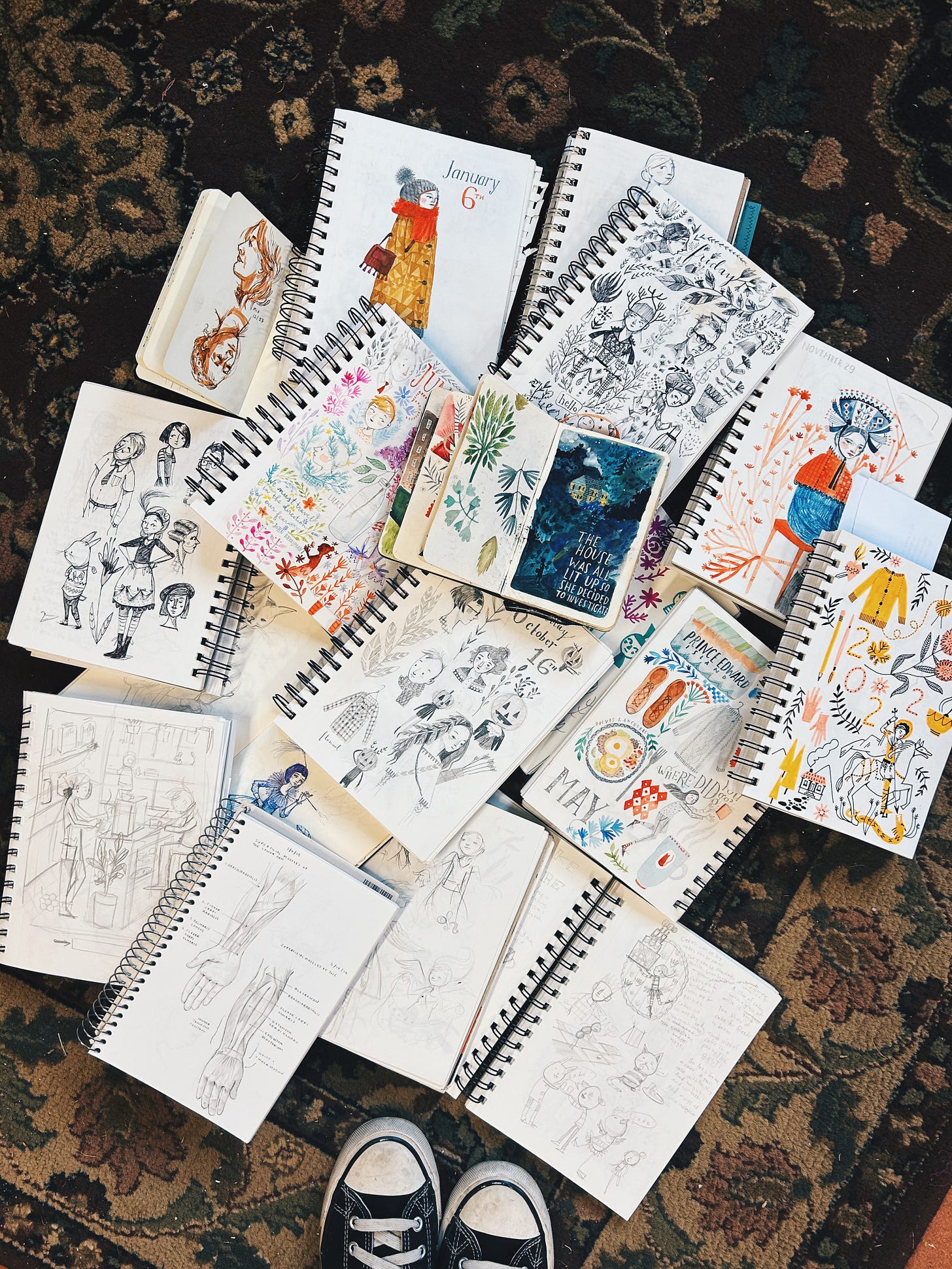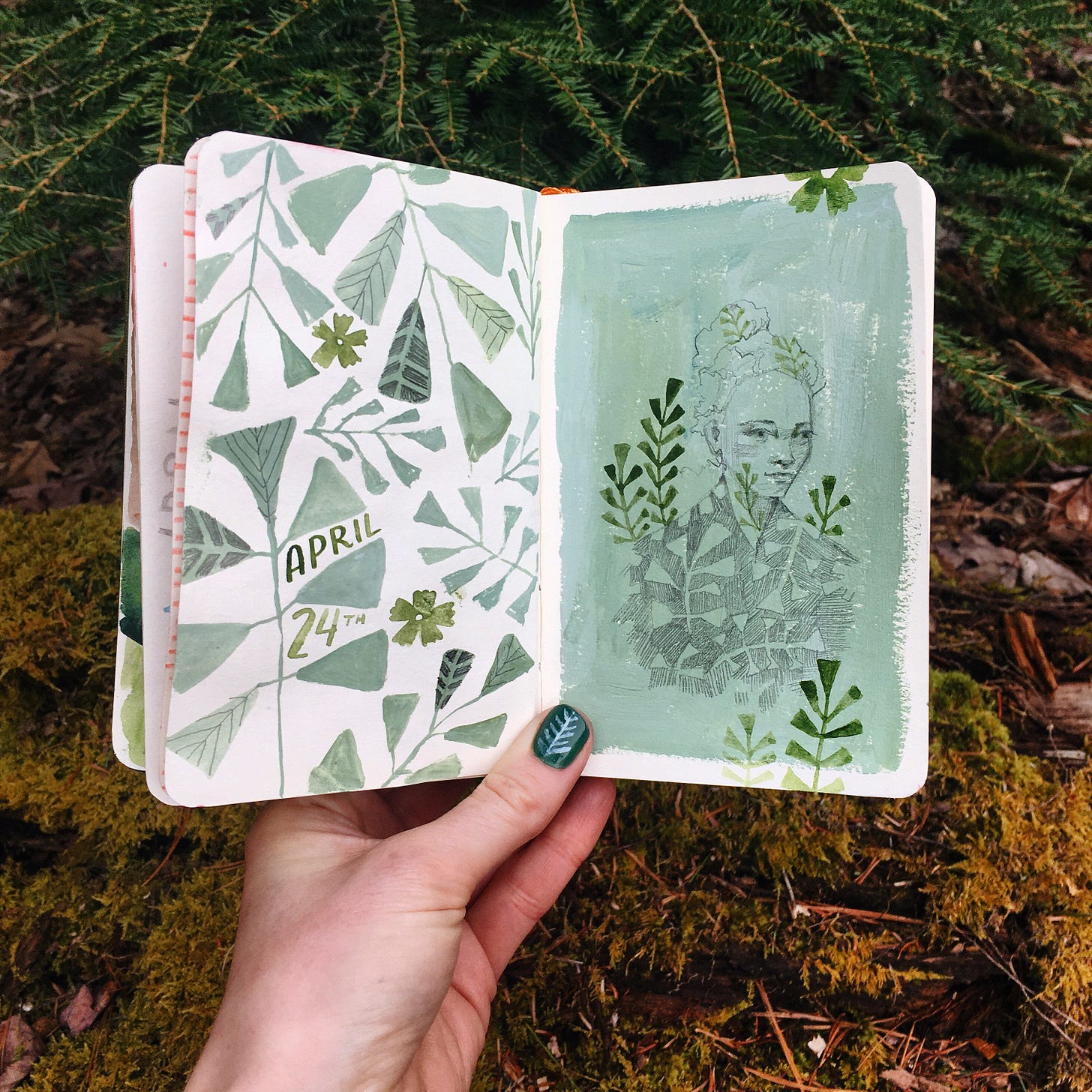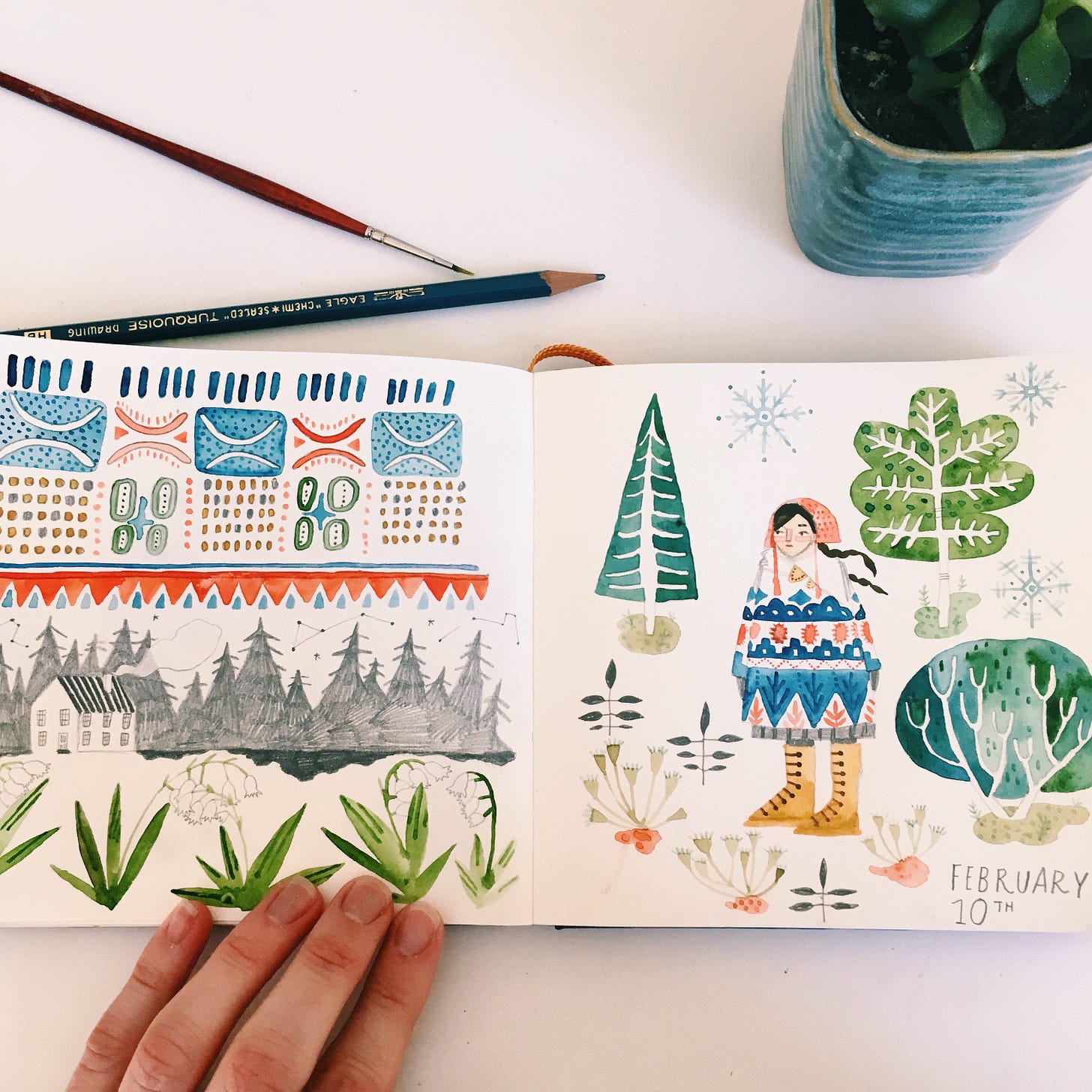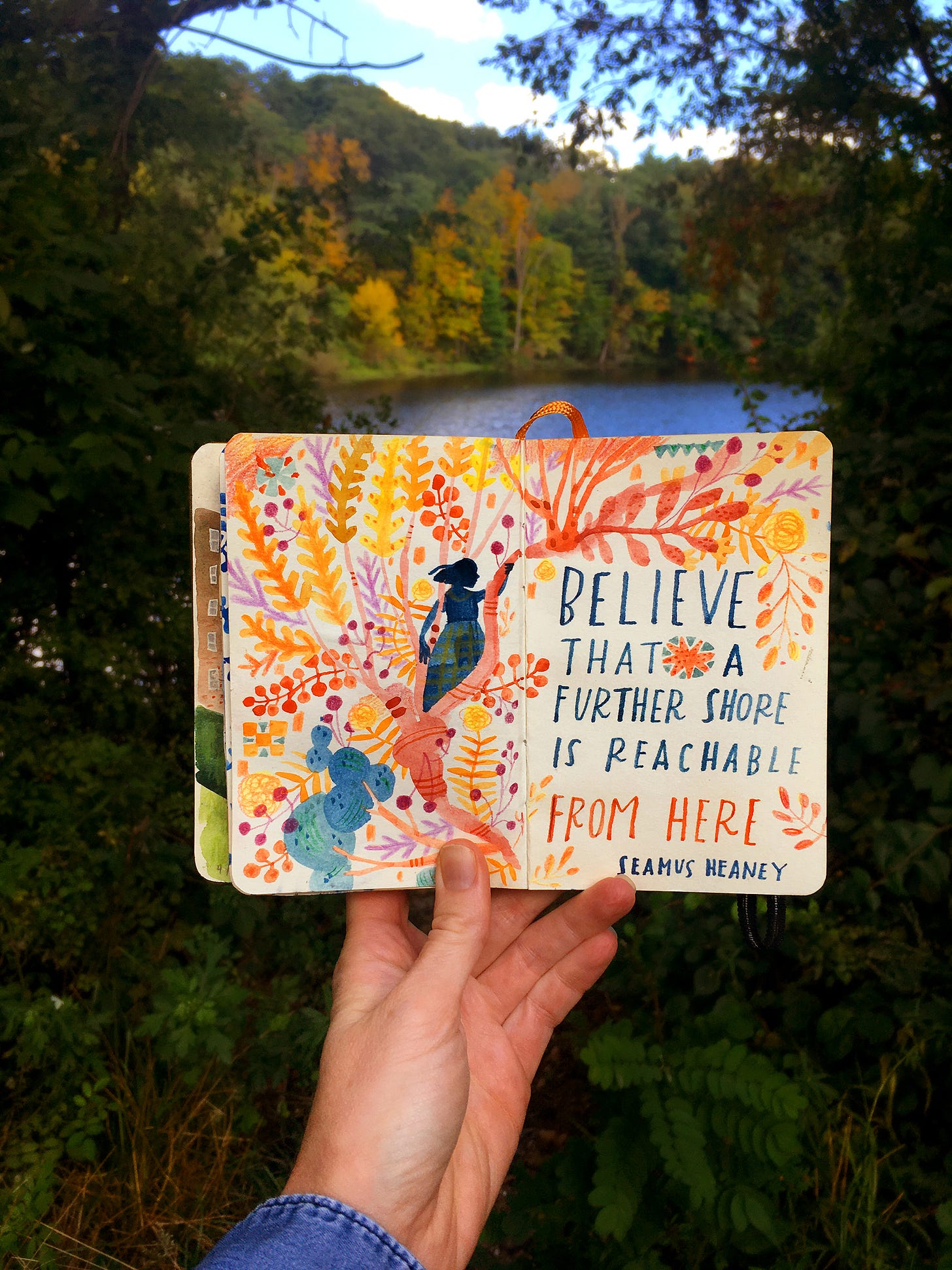Yesterday I pulled out my old sketchbooks and took a flip through them. The above represents close to 15 years worth of volumes. This doesn’t include any of my college or high school or even elementary school sketchbooks. So to quantify, I’ve kept a sketchbook in one form or another for over 30 years.
I’m a diehard proponent of sketchbooks: they allow you to process life visually, provide a space to carve out ideas and strengthen drawing abilities. I can’t imagine illustrating without having a sketchbook habit in place. I know that’s not a universal sentiment and it’s true that everyone develops as an artist differently. But for me, keeping a sketchbook is invaluable.
That said, for many there’s a roadblock in developing a sketchbook habit. There’s nothing more intimidating than a blank piece of paper, so suddenly faced with 100? That’s paralyzing. There’s also the issue of the fantastic sketchbook samples that populate social media. Those examples create an illusion that everyone is creating amazing art and that no one has drawn wonky heads and awkward hands and scribbles and… You get the picture. Personally, my sketchbook divides into “Will Never See the Light of Day” (95%) and “This is Passably Decent” (5%). I think the greatest takeaway is to remember that sketchbooks are works in progress and intended to foster an artist’s development, not serve as proof of fully-rendered work. Once you get that out of the way, it’s easier to crack open the pages. So, now that that clears up all the esoteric bits, practically, how do you begin keeping a sketchbook? Here’s a few suggestions I’d offer…
Go economical: I’m less precious with lower price point sketchbooks. If I’m less precious, I’m more willing to take risks. And sketchbooks are for risks. If the piece of paper costs me 8 cents versus .80, I face less angst when things go afoul. It’s just a fact. That’s not to say that higher quality sketchbooks are bad. I have had two beautiful Hand Book Sketchbooks that I love. But for day to day? I’m a big fan of the smallest size of these Canson books. I’ve tried a few other paper companies, but I like the texture of the Canson books best. They can take an okay amount of watercolor and the surface has just enough tooth, but not so much to make smaller drawings tricky. And for on the go, I actually keep a $5 pocket size book from Dollar General. Moleskine is nice, but if I’m killing time at the DMV or the dentist, I’m fine with something cheap.
Your sketchbook is for you: As mentioned above, the internet is full of gorgeous sketchbook examples. But sketchbooks shouldn’t be thought of as being for public consumption: they’re about artistic growth and growth can be weird and painful. If you draw something that pleasantly surprises you and it comes out well? Sure, go ahead and share. But if you start out drawing with an end goal of posting, paralysis will ensue. I’m saying that from personal experience. It’s the things I noodle away at with no intention of putting online that generally make me the happiest.
Set Parameters: You sit down with your sketchbook, a warm beverage and your favorite album streaming away. Or spinning. Your choice. It’s time to draw! And then… you choke. The fact is, having the option to draw anything is overwhelming. It’s why parameters can be beneficial for artists: it gives you creativity boundaries to work within and problems to solve. An example is the artwork of the Renaissance. The majority of artwork created during this time period was produced for patrons. And patrons had checklists. If you landed an assignment to paint an altarpiece, you didn’t just paint anything you wanted. You received a checklist: include the following three saints, five panels, the patron’s favorite daughter, finish it by this date, use egg tempera and can you start yesterday?
So channel your inner Renaissance artist and set some guidelines. Maybe you’ll challenge yourself to use only three colors of pencil. Or paint a series of random shapes, then go back in and try to create an illustration that incorporates them. Draw 50 flowers (the first ten will look pretty standard, but by the time you hit 40, you’ll be coming up with all sorts of creative botany). Keep a visual diary, drawing and noting things that happen throughout your day. If you have boundless amounts of creativity and never choke when trying to come up with something to draw, congratulations! But if you’re more like me, then parameters can be a way to move forward when you’re stuck.Problem Solve: It can be tempting to keep a “pretty” sketchbook. But growth is anything but pretty. I remember when growing pains hit my legs in 5th grade and the bones would ache. All that for a measly 5’5 in height, ha… But I digress. I wasn’t going to be tall enough to ride the rollercoaster without some discomfort. So take the same approach with your sketchbook. Keep drawing ugly hands until it becomes natural. Sketch letterforms that are challenging you (I have yet to draw an “M” or “W” that entirely satisfies me). Try layering different colors of paint and make notes about the results. If you draw something “meh,” try discovering what you can do to rework it or reimagine. Sketchbooks aren’t final art. Don’t treat them as such. Make peace with the pain.
And those are a couple pointers I’d offer for anyone looking to start keeping a sketchbook. I’m probably forgetting a zillion things, so I’ll revisit this in upcoming posts. But hopefully this is enough to get you going in your own sketchbook habit.







This is the nudge I didn't know I needed! I've been waiting to start up a sketchbook again, but lately my planner is filled with doodles and drawings as I sit on hold with insurance or the doctor's office.
We've given our older boys their own large spiral bound sketchbooks so their drawings can be kept in one place. It's so fun to see what they come up with, they're drawing daily and then they go back over older pieces and making new scenes out of what they didn't like before. It's fascinating.